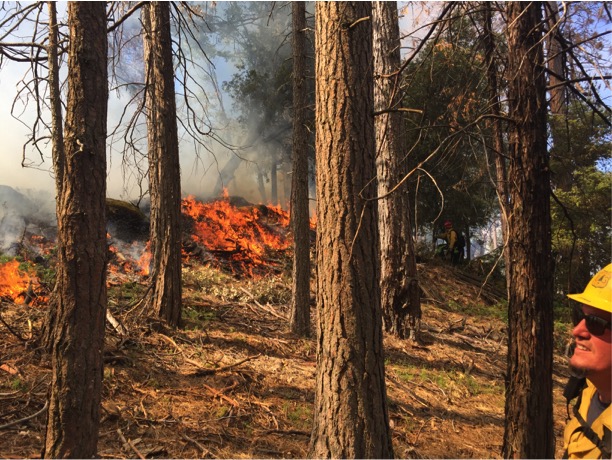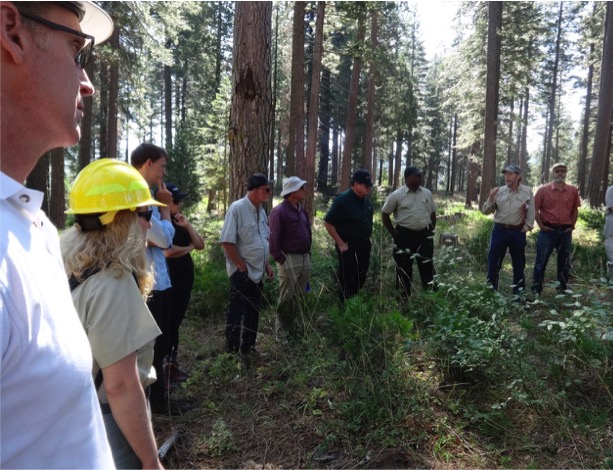Top Forest Service officials have repeatedly called for “an increased pace and scale” for science-based thinning logging, prescribed fire, and ecological restoration projects on USFS lands.
CSERC has strongly agreed with that need.
Yet despite the public statements made by agency officials, the results of projects on the Stanislaus Forest don’t match the agency’s promotions. Projects take years to design, to get studies completed, and to get work contracted and implemented. The amount of work accomplished stays at a low level, despite all the rhetoric

Photo by Adam Hernandez USFS

This is especially frustrating because CSERC participates in two forest stakeholder collaborative groups that strongly advocate for increased pace and scale of forest projects. The Yosemite Stanislaus Solutions (YSS) group in particular has had YSS leaders testify at state hearings, submit major grant proposals to gain more project funding, and lead forest field tours (such as the one at left). YSS has broad consensus agreement that conservation groups, timber industry representatives, county supervisors, and business interests all want to see more restoration work done.
With hundreds of millions of board feet of dead trees available over the past two years in the local forest as a result of the combined effects of drought and bark beetles, the opportunity has been high to produce wood products and simultaneously remove a significant portion of the excessive levels of wildfire fuel created by all the dead trees. Yet due to limited staff and resources, the Stanislaus Forest has primarily been limited to removing hazard trees along paved roads and around campgrounds and other facilities. Little progress has been made to clean up even a moderate percentage of dead tree thickets and the accumulating woody fuels that blanket many hillsides or that border hundreds of miles of gravel or dirt roads.
CSERC continues to work through the two forest stakeholder groups to attempt to gain more USFS staffing and funding so that an increased pace and scale for needed restoration treatments becomes a reality. If projects are consistent with science recommendations from USFS researchers, a combination of light logging and prescribed fire can reduce the risk of damaging, high severity wildfires and improve forest resilience to bark beetles and drought.

